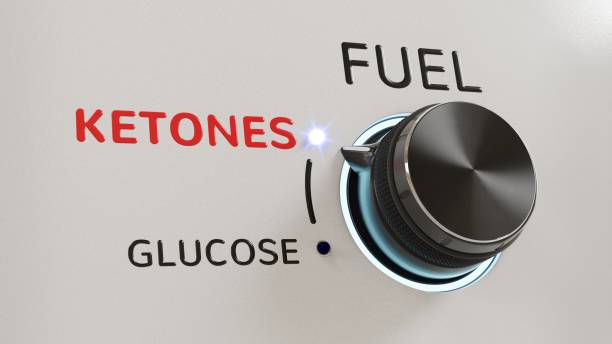
How To Calculate Your Macros For The Keto Diet: A Beginner’s Guide to Fat, Protein, and Carbs
If you’re ready to dive into the keto lifestyle but feel like you’re solving a math problem every time you look at your plate, don’t panic. Figuring out How To Calculate Your Macros For The Keto Diet might sound intimidating, but it’s easier than you think. With the right approach and a little humor, you’ll master your macros faster than you can say “pass the bacon.”
In this post, we’ll break down How To Calculate Your Macros For The Keto Diet step-by-step, so you know exactly how much fat, protein, and carbs to eat to hit your goals. Plus, we’ll throw in some tips to make it as fun and stress-free as possible. Because let’s face it: keto is more enjoyable when you’re not pulling your hair out over macros.
1. What Are Macros and Why Do They Matter?
Before we dive into How To Calculate Your Macros For The Keto Diet, let’s cover the basics. Macros—short for macronutrients—are the three main nutrients your body needs for energy:
- Fats: The star of the keto show and your primary energy source.
- Proteins: The building blocks for muscles and essential for repair.
- Carbs: Limited on keto because they can kick you out of ketosis.
The magic of keto happens when you get your macros right. By consuming the right balance of fats, proteins, and carbs, you’ll shift your body into ketosis—where fat becomes your fuel instead of glucose. Figuring out How To Calculate Your Macros For The Keto Diet is the first step to achieving keto success.
2. Step 1: Determine Your Daily Calorie Needs
To figure out How To Calculate Your Macros For The Keto Diet, you first need to know how many calories your body requires each day. This depends on your:
- Age
- Weight
- Height
- Activity Level
You can use an online Total Daily Energy Expenditure (TDEE) calculator to get this number. Your TDEE is the number of calories you need to maintain your current weight.
Example:
- Sarah, a 30-year-old woman, weighs 150 pounds, is 5’4” tall, and exercises moderately. Her TDEE is 2,000 calories.
Once you know your TDEE, you can move on to breaking those calories into macros.
3. Step 2: Set Your Keto Macro Percentages
Here’s where the fun begins. When calculating macros for the keto diet, the general guideline is:
- 70-80% of calories from fat
- 10-20% of calories from protein
- 5-10% of calories from carbs
This ratio ensures your body stays in ketosis. Let’s apply it to Sarah’s daily calorie needs (2,000 calories):
- 70% Fat: 1,400 calories
- 20% Protein: 400 calories
- 10% Carbs: 200 calories
Now you know the percentage breakdown, but how does that translate into grams of food? Let’s keep going.
4. Step 3: Convert Calories to Grams
To truly master How To Calculate Your Macros For The Keto Diet, you need to convert calories into grams for each macro. Here’s how:
- 1 gram of fat = 9 calories
- 1 gram of protein = 4 calories
- 1 gram of carbs = 4 calories
Using Sarah’s example:
- Fat: 1,400 calories ÷ 9 = 155 grams of fat per day
- Protein: 400 calories ÷ 4 = 100 grams of protein per day
- Carbs: 200 calories ÷ 4 = 50 grams of carbs per day
Final Macro Breakdown:
- 155 grams of fat
- 100 grams of protein
- 50 grams of carbs
Boom! You’ve officially calculated your keto macros. Give yourself a high-five.

5. Tips to Hit Your Macros Every Day
Now that you know How To Calculate Your Macros For The Keto Diet, the next challenge is sticking to them. Here are a few tips to make it easier:
Track Your Food
Use a food-tracking app like MyFitnessPal or Carb Manager to log your meals. These apps calculate your macros for you, so you don’t have to whip out a calculator every time you eat.
Meal Prep Like a Pro
Planning your meals ahead of time ensures you hit your macro targets. Cook keto-friendly meals in batches, and divide them into portions for the week.
Load Up on Healthy Fats
Fat is your fuel on keto, so don’t hold back. Add avocado, olive oil, butter, and fatty meats to your meals.
Avoid Hidden Carbs
Read nutrition labels carefully to avoid sneaky carbs lurking in sauces, dressings, and processed foods.
Keep It Simple
Stick to whole, nutrient-dense foods like meat, fish, eggs, low-carb veggies, and healthy fats. Simplicity makes hitting your macros stress-free.
Conclusion: Mastering How To Calculate Your Macros For The Keto Diet
Learning How To Calculate Your Macros For The Keto Diet is the key to success on your keto journey. By understanding your daily calorie needs, breaking them into the right macro percentages, and converting those calories into grams, you’ll have a clear plan to follow.
Remember, keto isn’t about perfection—it’s about consistency. Take the time to track your macros, plan your meals, and focus on eating healthy, keto-friendly foods. Before you know it, hitting your macros will become second nature.
For the best keto tips, recipes, and guidance, check out Keto Sensation. We’re here to provide you with everything you need to make your keto journey simple, enjoyable, and successful.
Now it’s your turn! Have you mastered How To Calculate Your Macros For The Keto Diet? Do you have any tips, tricks, or questions? Share them in the comments below—we’d love to hear from you!